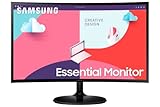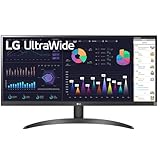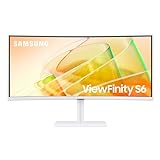Best monitor Australia
Which is the best monitor in 2025?
VIEW OFFERBest of 2025: Find the right monitor in Australia
In order to find the best monitor for your computer, there are a few things that you may want to consider. It is by no means necessary to upgrade all parts of a computer monitor. So it is much more worthwhile to get the best quality monitor that accommodates your specific needs, which may not be the same for everyone. Check out this guide to finding the right PC monitor for your needs:
The 10 best monitors in Australia (February 2025)
The bestseller list compares monitors from multiple brands

- Controls: OnScreen Control simplifies display setting adjustments.
- RefreshRate: 100Hz ensures smooth frame transitions during gameplay.
- Resolution: Full HD for vivid and accurate colour reproduction.

- Connectivity: Multiple inputs include HDMI and DisplayPort supporting up to 100Hz.
- Ergonomics: MSI EyesErgo tech reduces blue light for improved eye comfort.
- Resolution: Enjoy crisp visuals with a Full-HD 1920x1080 resolution.

- Comfort: Flicker-Free and Eye Saver modes reduce eye fatigue during extended use.
- Smoothness: AMD Radeon FreeSync and 75Hz refresh rate eliminate image tears and stutter.
- Immersion: 1800R curved screen reduces eyestrain for long gaming sessions.

- Design: Slim, space-saving design for a clean workspace
- Eyestrain: TUV Rheinland certification for reduced eye strain
- Visibility: Wide viewing angles for better visibility

- EyeComfort: Reduces blue light to prevent eye strain, irritation, and glare.
- ImageQuality: Vivid colors and wide viewing angles using VA panels with 300 cd/m² brightness.
- RefreshRate: Smooth, fast visuals with AMD FreeSync up to 180Hz for competitive gaming.

- Clarity: Game Mode adjusts contrast and colors for vivid scenes and spotting enemies.
- Smoothness: FreeSync and 75Hz refresh rate eliminate image tears and stutter for fluid gameplay.
- Comfort: Curved screen reduces eyestrain and helps maintain focus for long periods.

- Features: AMD FreeSync minimizes screen tearing.
- Display: IPS, FHD (2560x1080) for clear, vivid visuals.
- Size: 29" UltraWide for immersive viewing.

- EyeCare: TÜV Rheinland-certified flicker-free and low blue light for reduced eye strain.
- RefreshRate: 100Hz and 1ms for smooth, tear-free gaming.
- Resolution: 1920x1080 Full HD for crystal-clear visuals.

- Compatibility: NVIDIA G-SYNC minimizes screen tearing and stuttering.
- RefreshRate: 165Hz (Overclock 180Hz) ensures smooth image rendering.
- Resolution: Nano IPS delivers 2560 x 1440 for exceptional graphics quality.

- Color: HDR10 provides near limitless hues for true-to-life color representation.
- Connectivity: Power devices and transmit data with Thunderbolt 4 connectivity and multiple ports.
- Immersion: A 34" curved display surrounds you for an ultra-wide experience.
Affiliate link: We are a participant of the Amazon Associates Program. If you buy a product through this link we might earn a small commission from Amazon at no extra charge for you. As an Amazon Associate we earn from qualifying purchases.
- Read the definitive monitor buying guide
- View the monitor picks and see how they rank in the top list
- More related monitors reviews
monitor buying guide
Do you want to buy a good monitor? This is all you need to know.
A short explanation: What are monitors?
A monitor is the main display output device for a computer. It closely resembles a television and utilizes LED, LCD, and OLED technology to display images and text from the computer’s graphics cards. Computer monitors come in many shapes and sizes, and with a range of resolutions, refresh rates and more, all of which can be tailored towards various viewing experiences e.g. watching films, playing games.
What are the benefits of good monitors?
Any desktop computers require a monitor unless you plan on using them remotely. The same doesn’t go for laptops, as it’s possible to replace a broken monitor with another one. Simply put, if you want to use a desktop you will require a monitor, Additionally, the best monitors offer crisper displays and more dynamic colours than most laptop screens, so even when buying a monitor for a laptop, you will see an improvement in display quality. The best monitors do not come cheap, but there are many affordable options that offer great display quality.
How to choose the best monitor in 2025?
Looking for the best computer monitors but don’t know what you need? There are so many things to take into consideration when looking for the right monitor, including understanding technical jargon! It’s perfectly fine to buy a low-cost monitor if you don’t need it for anything specific, but more high-end models do offer some attractive features. Consider some of the following before choosing a good monitor:
- LCD vs LED: The two best computer monitors to choose from are LCD and LED. LCD is the older technology that uses a cold cathode tube as a backlight, while LED is the newer option that uses less toxic and more efficient light emitting diodes. LED is considered an upgrade to LCD, but it’s actually an adjusted form of LCD monitors. So, they are still quite similar and both more than reliable.
- Panel Size: LCD and LED monitors come in varying panel sizes, with 17, 20, 21, 22, 24, 27, and 30-inch monitors among some of the most popular sizes. Think about the use of your monitor to help determine what size you need. For instance, if you are a home worker looking at spreadsheets for hours on end, then a smaller screen size may be too difficult to work with, while someone using their monitor for movies, games, and TV shows may prefer a larger size monitor.
- Contrast Ratio: This technical feature refers to the difference in light intensity between the brightest white and darkest black of a monitor. The best computer monitors for contrast are those with the highest ratio, as more shades of colours can be displayed throughout this range. 500:1 is the lowest ratio you should accept, with 1000:1 being the best contrast ratio available.
Which types of monitors are available to buy in Australia?
For the most part, monitors are categorised by the type of screen they use. Asides from some niche types designed for specific uses, most monitors are either:
- CRT Monitors: The cathode ray tube has largely been abandoned by the computing industry, yet CRT monitors are still available and offer an affordable alternative to the latest and greatest. They offer decent quality viewing but will take up much more space and energy, so are quite the impractical choice.
- LCD Monitors: The acronym for liquid crystal display, LCD monitors are the most widely device for viewing computer screens. It is a great all-rounder, with various sizes and resolutions available, and the best choice when looking for a computer, hoping to find a monitor that matches the system in both style and substance.
- LED Monitors: The light-emitting diode monitor is an improved version of the LCD monitor, offering an even better picture quality while keeping the same familiarly thin design. It’s also more likely to have an HD display, although this was also possible with LCD monitors.
